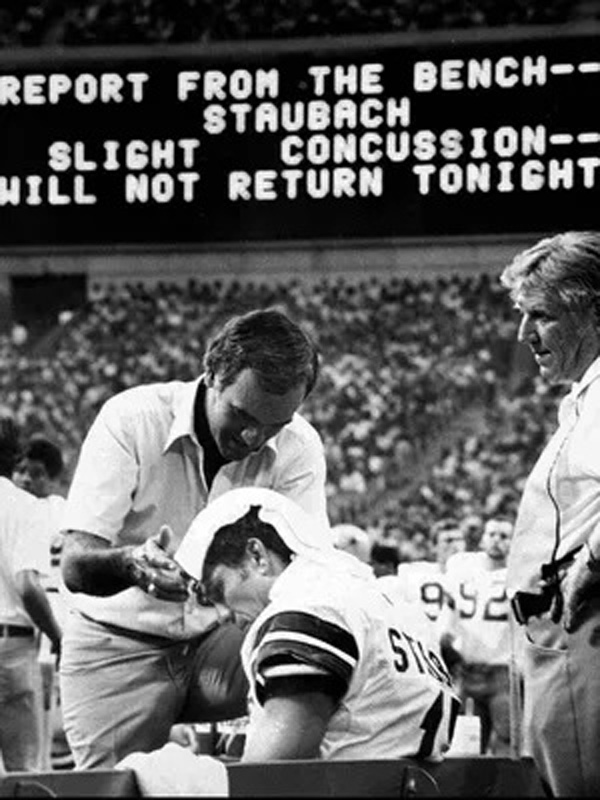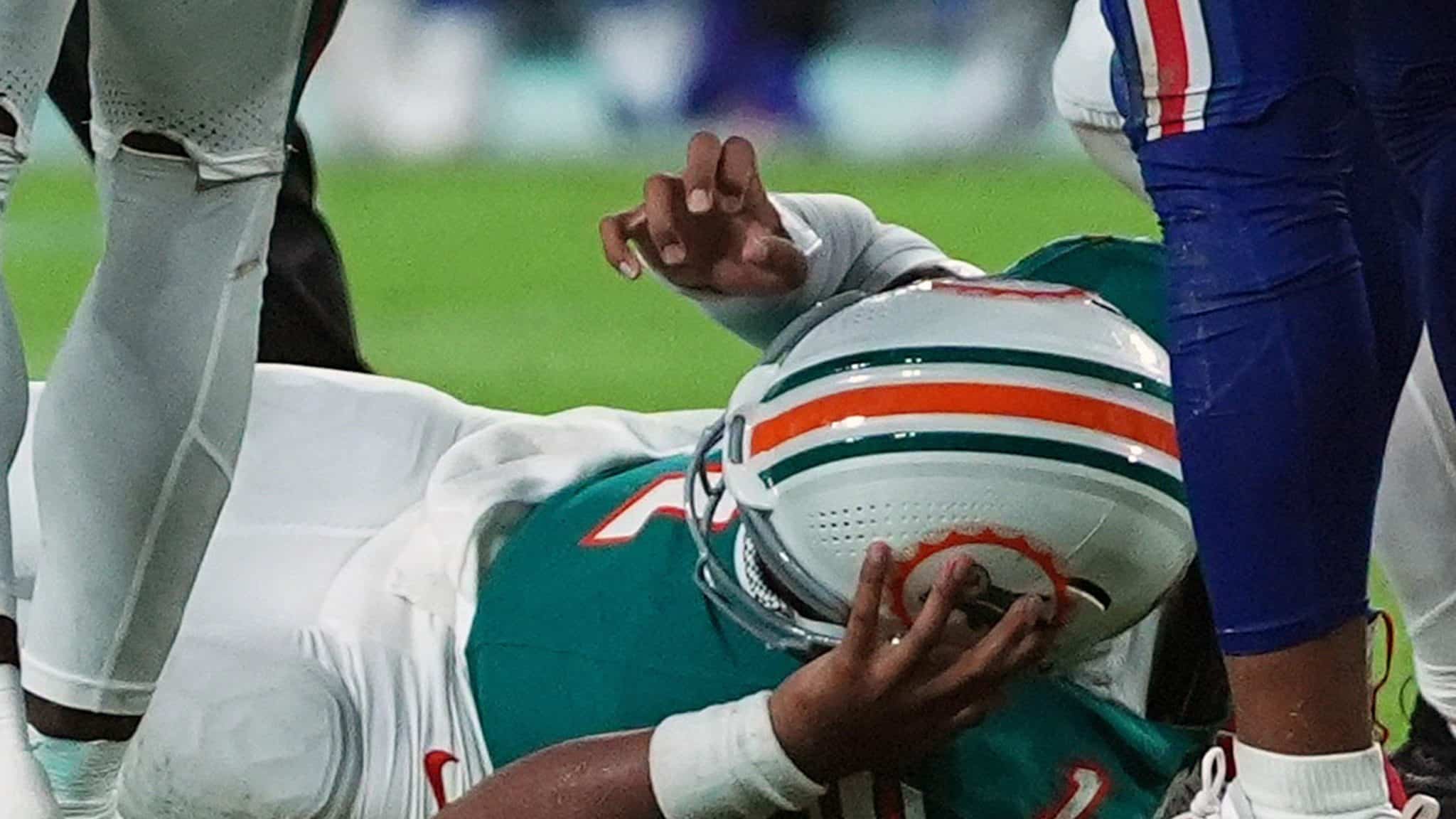It has now been a full week since Miami Dolphins quarterback Tua Tagovailoa was knocked out of a Thursday night game against the Buffalo Bills with his third diagnosed concussion.
Technically, it’s at least his fourth since being drafted into the NFL in 2020. He likely suffered one in 2022 that was not officially diagnosed.
Still, how that situation played out ultimately led the NFL to adjust its concussion protocol.
Because he was clearly concussed even though the Dolphins refused to say so.
Tagovailoa also suffered a concussion in his final year at Alabama in 2019. In short, his brain has taken a beating.
The Dolphins finally placed Tagovailoa on injured reserve, meaning he will miss this week and at least three more before being allowed back on the field.
In actuality, Tagovailoa should never step out onto any football field as a player again. He needs to retire, just like Cowboys legend Roger Staubach did after the 1979 season.
Staubach’s Career Cut Short
For Staubach, he had already missed the first five years fulfilling his obligation to the U.S. Navy. He was already an “old” rookie when he was finally able to report to the Cowboys.
It took a few more years before he wrested the starting job away from Craig Morton.
Staubach got in nine years as the Cowboys starting quarterback – although one year was lost to injury in that stretch between 1971-79.

But during that time, he and his brain – like Tagovailoa – took a beating. Unlike Tagovailoa, there was no concussion protocol to protect Staubach.
The exact number of concussions he sustained – and how many games he played concussed – is probably unknowable.
At the time, some of the opposing defenses even game-planned to hit Staubach in the head to try to knock him out of the game. There were no special rules to protect quarterbacks back then either.
By the end of the 1979 season, Staubach had taken enough and retired. He likely had another two or three years left in his body.
His brain had probably taken enough abuse two or three years earlier.
Tagovailoa shouldn’t wait that long to realize the same is true for him.
The Red Flags
In the last two plays where Tagovailoa was clearly concussed – and likely unconscious for a brief time on the field – he went into a fencing position while on the ground.

There is also the play when he was clearly not all there and tried to walk up the field. He was walking like someone who had just gunned down a case of whiskey in about 60 seconds.
The severity, and the relative frequency, of the incidents are a red flag as large as the state of Texas flag flying on the Texas-Oklahoma border on Interstate 35.
This last one comes despite Tagovailoa wearing a helmet specifically designed to limit the chances of a concussion.
Imagine how much worse it would have been last week. Tagovailoa’s head drove straight into the chest of Bills’ defensive back Damar Hamlin.
Without the added protection of that special helmet Tagovailoa might have ended up being carted off again as he was in 2022.
If the concussions continue – and continue to worsen – Tagovailoa’s story will not have a happy ending.
Someone Needs to Step In
The Dolphins all but had to be shamed into placing Tagovailoa on IR as it was. Head Coach Mike McDaniel seemed to leave it up to Tagovailoa to decide if he wanted to keep playing.
No one in the organization seems to be willing to step in and have the conversation with Tagovailoa that he needs to hear.
Tagovailoa himself is thinking like any 26-year-old male. He thinks he’s invincible – just like the rest of us did at that age.
His 40-and-50-year-old selves would beg to differ. They would undoubtedly point out that both he and his family are financially set for life.
He does not need to risk his long-term mental health – and even his very life – by putting on a helmet and stepping onto a football field ever again.
His mother tried to talk him out of playing after his bout of concussions in 2022.

She needs to have that conversation again – along with the rest of his family and his true friends. The ones who want him around for the next half-century or so.
And not only just physically around – but mentally around too.
The list of former players who ended up with chronic traumatic encephalopathy is terrifyingly long. And that’s just the known players.
There are likely many, many more unknowns.
Saving Tagovailoa From Himself
The most tragic story of a player suffering the effects of a brain injured while playing football is Junior Seau.
His brain injury ultimately drove him to commit suicide at the age of 43.
If the NFL, the Miami Dolphins, or even Tagovailoa himself, will not step up and do the right thing, then his friends and family must.
He is literally one hit away from a permanent injury to his brain he will not recover from. One that could even lead to his death.
He is one hit to the head away from finding himself on the path that Seau walked – one of years of suffering ending in suicide.
Staubach realized he could endure no more in time and retired at the age of 37. He is now 82 and has enjoyed 45 good years since he last walked off an NFL field.
Hopefully, he has many more to come still.
Tagovailoa could have another 50-70 good years with his friends and family ahead. They need to remind him of what’s more important than any single football game.
They need to convince him to walk away from his playing days and never look back.